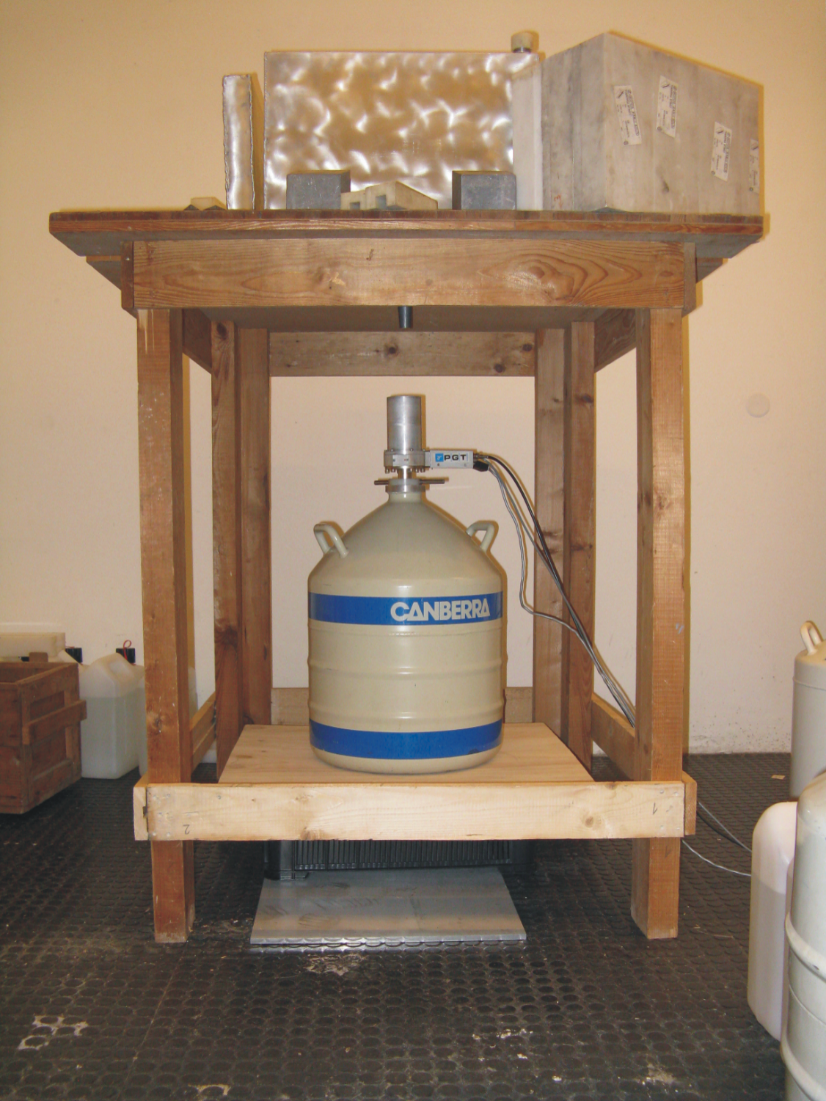

Stationary calibration gamma-ray station
Tomas Slavicektomas.slavicek@utef.cvut.cz
Radiation detectors and radiation‐related applications in space such as gamma‐ray detection require a configurable and wide‐range gamma‐ray source as calibrating and testing platform for gamma‐ray detectors and gamma‐ray sensitive devices. A stationary wide energy‐range gamma‐ray source of compact size is built by using a small radioactive neutron source to produce neutron‐induced prompt gamma‐rays.
Prompt gamma‐rays are generated by neutrons following two processes: radiative capture of thermal neutrons - i.e. (n,γ) reaction, and inelastic scattering of fast neutrons – i.e. (n,n'γ) reaction. The high energy gamma rays are namely produced during radiative neutron capture which however requires moderation of neutrons to thermal energies. Neutrons are most readily thermalized by light materials such as water, heavy water, graphite and paraffin. The energies of the produced gamma‐rays correspond to discrete transitions between well-defined energy states of the residual target nuclei; hence they are characteristic and unique for each material. The gamma–ray energy spectrum provided can range from few tens of keV up to 10 MeV depending on the convertor material composition used. The gamma–ray yield or peak intensities depend on the convertor material amount (volume) and station geometry.
The body of the station is a container with appropriate target volume surrounding the radioactive neutron source (see Fig. 1 and Fig. 2). The container can be filled by liquid materials according to the specific needs. The composition of the tank can be configured. Suitable target materials have large neutron capture cross-sections and well separated energy lines in a broad energy range. Chlorine for example has a large cross-section and well separated lines up to 8.5 MeV. An ordinary mixture salt and water can serve as simple target material. There are other target materials available; Iron, examples of soils and coals. The gamma-ray flux can be adjusted by the salt concentration in same range. Other elements in the salt have much smaller cross sections and can be neglected. The construction material of the container is of small cross-section materials in order to keep the spectrum as clean as possible. Pure materials such as pure Aluminum are typically good building materials. The composition of the floor of the testing room should be also taken into account.
 FIG. 1: Assembled Stationary gamma-ray station.
FIG. 1: Assembled Stationary gamma-ray station.
 FIG. 2: Target area of Stationary gamma-ray station.
FIG. 2: Target area of Stationary gamma-ray station.
The container tank of the station can be filled by liquid materials according to the specific needs. The configuration of the active volume can be configured. The operator can be shielded by a lithium enriched polyethylene (LiPE) bench.
The gamma ray field provided by the assembled station was tested and calibrated with a new high efficiency HPGe detector of size 54.9 mm x 81.3 mm. The station was loaded in its standard configuration (i.e. 100 l water (H20), 22 Kg salt). The gamma-ray spectrum measured is given in Fig. 3. The spectra of gamma rays are characterized and calibrated in terms of energy and intensity using well established lines from Co, Cs, Sr, Cl, and C.
 FIG. 2: Spectrum of gamma-rays of the assembled station measured with a HPGe
detector. Acquisition time = 64080 s (= 1068 min = 17.8 h). Distance detector to source = 2 m.
FIG. 2: Spectrum of gamma-rays of the assembled station measured with a HPGe
detector. Acquisition time = 64080 s (= 1068 min = 17.8 h). Distance detector to source = 2 m.
The team of the project is:
This project was funded by ESA ESTEC Contract No. 4000103891/11/NL/CBi.
 European Space Agency
European Space Agency